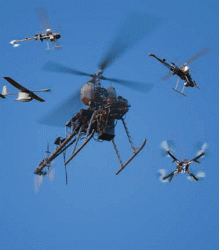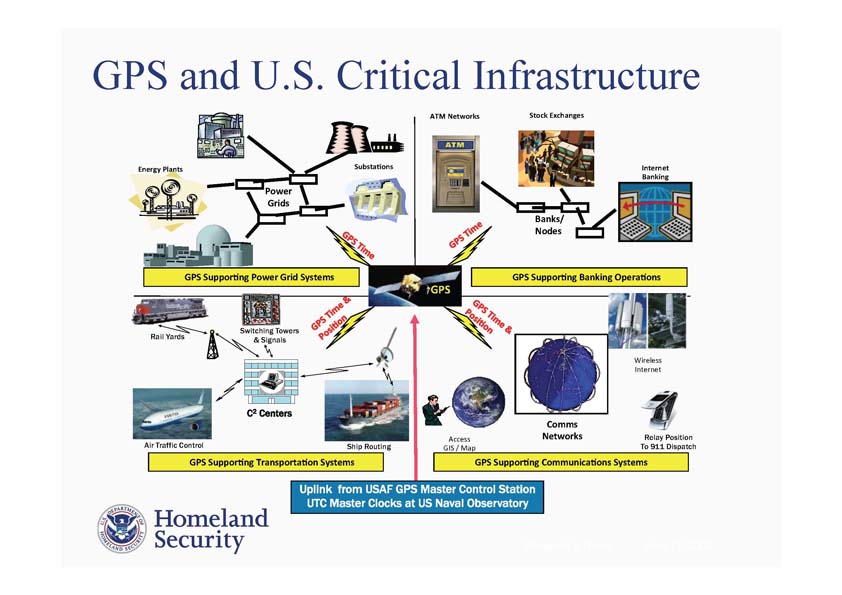
A congressional committee overseeing activities at the Department of Homeland Security (DHS) appears poised to push the agency into a more substantive role in overseeing the use of drones in the United States — a move that could force DHS to move more forcefully to protect GPS users from spoofing.
The Subcommittee on Oversight, Investigation and Management within the House Homeland Security Committee is looking to DHS to manage the civil use of unmanned aerial vehicles (UAVs) or drones.
A congressional committee overseeing activities at the Department of Homeland Security (DHS) appears poised to push the agency into a more substantive role in overseeing the use of drones in the United States — a move that could force DHS to move more forcefully to protect GPS users from spoofing.
The Subcommittee on Oversight, Investigation and Management within the House Homeland Security Committee is looking to DHS to manage the civil use of unmanned aerial vehicles (UAVs) or drones.
“DHS’s lack of attention about this issue is incomprehensible,” said Subcommittee Chairman Michael McCaul (R-Texas), who repeatedly took the agency to task for refusing to appear at a July 19 hearing on the civil use of drones. “I believe the department should come before this committee to answer why they believe they should not have a role in this [issue].”
The successful use of drones by the military in Afghanistan and Iraq has sparked great interest in using them domestically to do such things as monitor borders and police emergencies, track natural disasters and support search and rescue. The outlook for drones is so positive that the Federal Aviation Administration has predicted 30,000 domestic UAVs will be in use by 2020. FAA is now working on preparing a congressionally mandated plan, due in 2015, to integrate the small craft into the national airspace.
Though UAVs offer an inexpensive way to monitor large areas, the high-flying mini-planes pose risks as well. A Massachusetts man pleaded guilty in July to a 2011 plot to use model planes to attack the Pentagon and the Capitol with explosives. The plan had some similarities to an attack described in the 2010 novel Intelligence by former CIA analyst Susan Hasler in which terrorists used model airplanes to panic fans in a crowded stadium — killing many in the ensuing stampede.
“We had a direct threat to the Capitol and the Pentagon,” said McCaul, “yet they don’t see it as a role for the Department of Homeland Security to come with a policy and a security assessment to monitor the threat that these domestic drones can pose to the American people.”
DHS does, however, have a mandate to protect GPS signals from interference — an area of great interest to the committee, which closely questioned Dr. Todd Humphreys of the University of Texas–Austin about the implications of a successful spoofing experiment done by his research team earlier this year.
Humphreys said his researcher team had queried DHS about the possibility of taking over an UAV by spoofing the civil GPS signal used to guide it. In response their question DHS offered the researchers a chance to a test their theory as part of a larger effort to identify risks to GPS users.
The team developed a spoofing device that broadcast a counterfeit GPS signal at the target – an $80,000 Hornet Mini built by Adaptive Flight. The power on the fake signal was gradually increased until it supplanted the accurate information. As a result, the target craft, started to drop.
“He made it move down by forcing it to think it was going up,” said an expert familiar with the experiment who discussed it on condition of anonymity.
The results of the experiment, which was done under highly controlled circumstances at White Sands Missile Range, New Mexico, would be very hard to repeat in the real world, the expert noted.
Even so it did demonstrate that simple spoofing was possible and poses a potential risk to not only UAVs but other systems that depend on GPS signals. Humphreys recommended to the subcommittee “that GPS-based timing or navigation systems having a non-trivial role in systems designated by DHS as national critical infrastructure be required to be spoof resistant.”
That appears to be a role that DHS is already considering as it assesses the potential effects of interference to GPS signals as part of its “National Risk Estimate: Risks to U.S. Critical Infrastructure from Global Positioning System Disruptions.” The report, which could potentially guide regulation for critical systems, was already in the midst of interagency coordination early this year.
Whether DHS will take on the issue of UAVs remains to be seen. As this issue of Inside GNSS SIGNALS went to press, the agency had not respond to a request for comment on the work being done.
In testimony before the subcommittee, Humphreys supported a role for DHS, suggesting it was a more appropriate agency to regulate UAVs than say, FAA, whose focus is on safety and not security. He said spoof-resistance should be required for civil UAVs exceeding 18 pounds and operating in the national airspace.
He also recommended that DHS commit to “funding development and implementation of a cryptographic authentication signature in one of the existing or forthcoming civil GPS signals.” Given the funding — as well as technical and operational — implications of altering GPS signals, Congress may be forced to demonstrate its commitment as well and come up with the money.
Dee Ann Divis is an editor at the Washington Examiner in Washington D.C. She writes the Washington View column for Inside GNSS.





